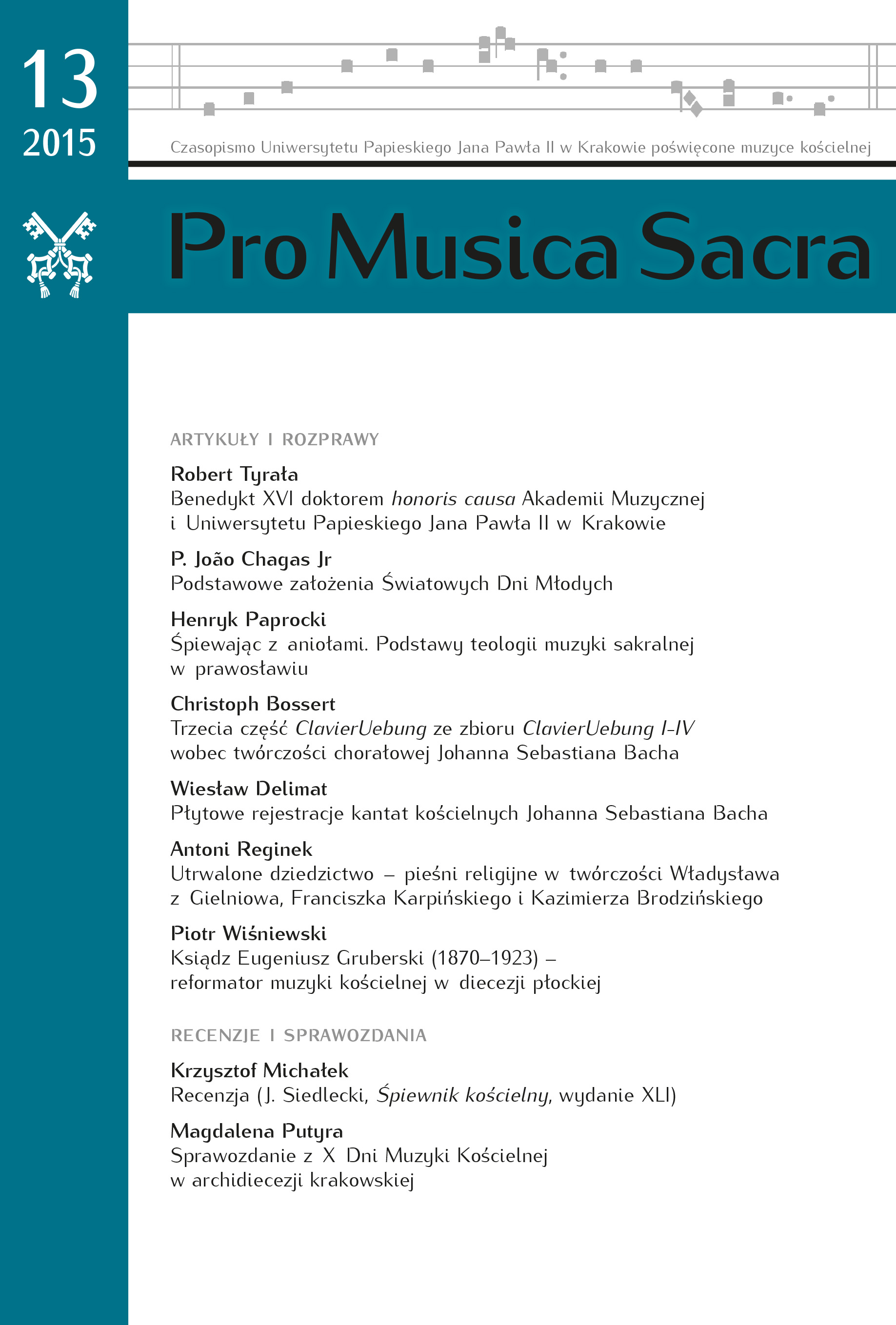Third part of ClavierUebung inside ClavierUebung I–IV and inside the chorale-style composing of Johann Sebastian Bach
DOI:
https://doi.org/10.15633/pms.1116Keywords:
Bach, Bossert, research, symbol, symbolism, ClavierUbung, ClavierUebung, Clavier, chorale, protestant chorale, theology, symmetryAbstract
Christoph Bossert has succeeded in proving symmetries in a serie of cycles inside of Bach’s composing, who are not known already, for example the Chorals of the Neumeister-Collection, the Welltempered Clavier, part 1 and part two and the third part of ClavierÜbung. Inside of ClavierÜbung III are 27 pieces, but 29 different parts belonging to the mesuring. In consequence Nr. 15 Vater unser im Himmelreich is the center, structered in 40 + 1 + 50 bars. The propotion 4 to 5 can be seen in Nr. 17 to 13 as well as Nr. 11 to 19. Another kind of argument for symmetrie are the two trios Nr. 9 and 21. In five pieces Nr. 4 to 26 as well as Nr. 11 to 19 and Nr. 15 as the central piece is the end structered in 13 bars or half bars. the often discussed question of tonality can be answered by the order of the basic ton of every piece – Nr. 2, 3, 4, 5, 6, 7 has two of them. The melodical line of the eleison inside the Kyrie can be seen as structure therefore, variated in shorter version, in revers and as inversion. One of the very special questions concern to Nr. 20 to 23 in fis, d, f and e. Because of the so structured order of basic tones it’s obvious, that all pieces without pedal and especially the Duettos belong to the whole work as a cycle as well as the pieces with pedal.
References
Bach J. S., Clavier Uebung 3e Partie, Présentation par Philippe Lescat, Courlay 1990, s. 16.
Bach J. S., Orgelchoräle der Neumeister–Sammlung von J. S. Bach, Kassel 1985.
Luter M., Ordnung und Form des Gesangs zur Art der Communion, 1526.
Scheibe J. A., Critischer Musicus, 6, Leipzig 14 maj 1737.
Downloads
Published
Issue
Section
License
Authors who publish with this journal agree to the following terms:
- Authors retain the copyright and full publishing rights without restrictions, and grant the journal right of first publication with the work simultaneously licensed under a Creative Commons Attribution 4.0 International License that allows others to share the work with an acknowledgement of the work's authorship and initial publication in this journal.
- Authors are able to enter into separate, additional contractual arrangements for the non-exclusive distribution of the journal's published version of the work (e.g., post it to an institutional repository or publish it in a book), with an acknowledgement of its initial publication in this journal.
- Authors are permitted and encouraged to post their work online (e.g., in institutional repositories or on their website) prior to and during the submission process, as it can lead to productive exchanges, as well as earlier and greater citation of published work (See The Effect of Open Access).

